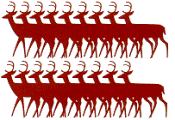United States Department of Agriculture, National Wildlife Research Center: Symposia

Contraception in Wildlife Management
Date of this Version
October 1993
Abstract
Despite more than 4 decades of effort, development of effective wildlife damage control programs based on sterilization of target species has met with limited success. This is partly due to the fact that investigators have assumed, rather than empirically tested, whether the reproductive strategies of the target populations were vulnerable to the planned treatment. Equally important, methods selected to induce sterility usually involve a chemical agent that can affect sociosexual behaviors of the nuisance population. In this report, we illustrate how surgically induced sterility circumvents both problems-how it enables one to assess the feasibility and applicability of the concept without the potentially confounding secondary effects of a chemical. We assessed the merits of initiating research to develop a male chemosterilant for Norway rats, red-winged blackbirds, beaver, and Canada geese by inducing sterility surgically. The infidelity of many red-winged females to their polygnous territorial male was surprising and argued against searching for a male sterilant. On the other hand, beaver and Canada goose studies confirmed previous reports that both form pair-bonds and are monogamous. Both should be vulnerable to a male chemosterilant approach, and research toward this goal is justified.


Comments
Contraception in wildlife management. APHIS Technical Bulletin No. 1853. USDA, Animal and Plant Health Inspection Service, Washington, D.C., USA.